#like. especially for characters in non-visual media/mediums
Explore tagged Tumblr posts
Text
im thinking about pjo character design analysis now and it is definitely not the hour to be doing this. hm.
#three of my favorite things: pjo. character design. and analysis.#its just very cool and fascinating to me!!#like. especially for characters in non-visual media/mediums#what traits does the audience or fandom latch onto more? what things in combination become distinct to that character?#to the point of being specifically identifiable?#that's such a cool topic to explore!#and having been in the pjo fandom so long and having watched popular designs for the major characters evolve it's especially cool#cause you get to watch over time what sticks and what's lost and what gets picked up by fanon for awhile#which also is extra interesting for the minor and background characters#cause they dont get drawn nearly as much and dont have nearly as much description#so you end up with relatively similar main character designs and WILDLY different minor character designs#with some rare through-lines of popular fanon. like Katie is a good example#she has next to no description but the fandom pretty collectively agreed ''okay. like red or strawberry blonde-ish hair. braids. flowers.''#its kinda cool how some characters most people just kind of settle on something
15 notes
·
View notes
Text
So over the last few months I’ve been looking into something and I’m not quite sure what to make of my results. Basically from what I can see novels featuring and/or starring Transmasculine characters seem to far outnumber novels featuring and/or starring transfeminine characters. For that matter there seems to even be more available material with non-binary characters, then transfeminine ones. For example, Audible is currently doing a focus on trans and non-binary writers. And if you look through all the highlighted books under general fiction, Science Fiction/fantasy, and YA fiction you should see what I mean. https://www.audible.com/blog/category/trans-nonbinary
What I find especially odd is that from my own research it seems like the reverse is true when it comes to movies, television, and even comics. In these mediums, transfeminine characters seem to be more prevalent than Transmasculine ones. But what I can’t seem to figure out per se is why. Obviously, there’s something about visual mediums that is having an impact on all this, but then why is there such an imbalance in the other direction when it comes to the written word?
Like I don’t have enough information to try and determine is it something to do with how generally successful trans men are at blending (aka passing but that’s a term I don’t like) versus trans women? I might almost think so except that in said visual mediums when trans feminine characters they are almost always presented as capable of blending with little difficulty. I don’t know. It’s something I wish I had the time and money to really dig into. You know like reach out to various authors and media experts and get a conversation going on it. Because to me, it’s such a fascinating dichotomy and one way or another it’s a topic I intend to further explore going forward. there’s something here. There’s definitely something here.
#fiction#ya fiction#transgender#television#movies#comic books#interesting trends#queer#lgbtqia#transmasc#transfem#nonbinary
15 notes
·
View notes
Note
What are your top 5 (or top 10) favorite media ever (can be anime/manga, tv series, books, movies, games, etc)? Why love them? Thanks ⭐
[ In all honesty, as I was going through my inbox, I was dreading responding to this ask. Not because the question was awful—it's a great question. The problem is that I'm quite indecisive and tend to overthink things. I'm going to attempt to keep this brief because if I allow myself to ramble, it will take me a month to write this post—and by then I'll have changed my mind. (Spoiler Alert: I failed lmao)
As I've already stated, I typically only consume anime/donghua and manga/manhua/manhwa, so my list will be confined to those. I have conflicting feelings about many of the series I've seen, especially those that have ended recently—because, let's be honest, manga endings have been terrible lately (if you know, you know)...
Another issue is that I've been attempting to restructure my top ten because my entire concept of what constitutes a great series has shifted recently. For a long time, I had subconsciously internalised the notion that shoujo/josei series and non-combat-orientated series were inferior to mainstream battle-focused shounen series.
I subconsciously thought that I would be looked down on for including these series in my top 10 over more respected manga. Although it persists to some extent, I was mostly able to get over this after learning about biases in the anime and manga industries on how shoujo versus shounen series are handled and perceived. ]
✧⋄⋆⋆⋄✧⋄⋆⋅⋆⋄✧⋄⋆⋅⋆⋄✧⋄⋆⋅⋆⋄✧⋄⋆⋅⋆⋄✧⋄⋆⋆⋄✧
Top 10 Favourite Series:
#10 The Apothecary Diaries
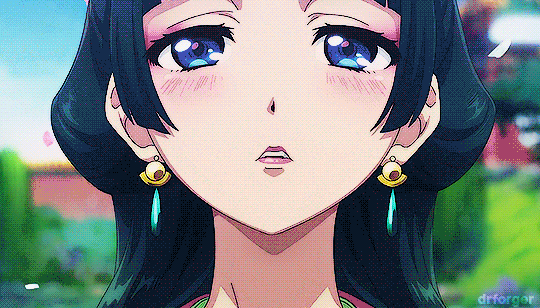
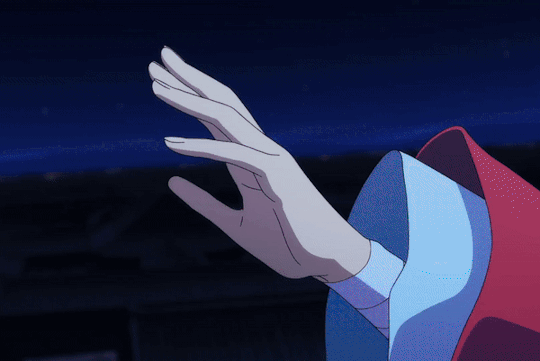
This show has captured my attention even though I have only seen the first season. Although Maomao and Jinshi's dynamic is undeniably my favourite part of the series, its complex themes and political intrigue are not to be understated either. Another aspect I like about the series is its unique incorporation of femisism. It uses its rigidly misogynistic historical setting to highlight the subtle strength, ingenuity, and resolve that women rely on to navigate and endure society. Even amongst a society that devalues women and fosters competition among them, we observe women supporting one another and persevering. In this manner the series provides a refreshing standpoint on female empowerment. The adaptation was perfectly executed, as exemplified by its undeniably captivating aesthetics, music, and ambience. I'm eagerly anticipating season 2 and can't wait to see where the series goes.
#09 Link Click
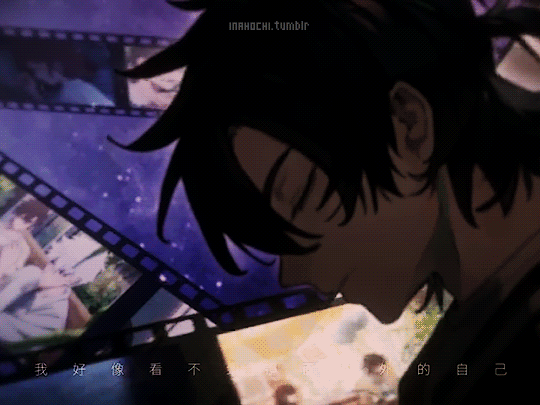
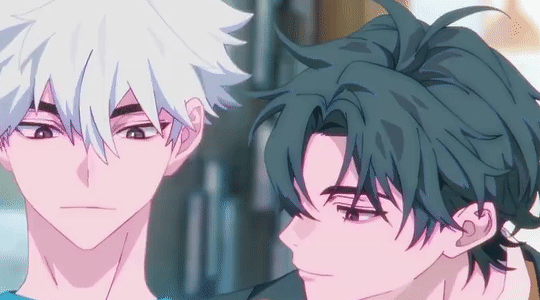
While at first, it may not seem like much, this show has really developed into something refreshingly brilliant thanks to its unique supernatural abilities and ever-increasing stakes. Aside from its unique art style, compelling twists, and captivating storytelling, all of which are refreshingly good, the music is definitely my favourite part of this show, as it is carefully crafted to complement the narrative. The dynamic between our two leads is incredibly endearing and heartbreaking. The symbolism is incredibly intricate and complex and is intertwined masterfully into every aspect of its production—most notably its character designs, music, and visuals. Every episode leaves you on the most stressful cliffhanger of your life, leaving you eager for more.
#08 Mo Dao Zu Shi


My favourite part of this series is that there are so many different mediums to experience it through, with each one providing a slightly different experience. While the novel and Donghua are my personal favourite adaptations, the C-drama was very entertaining as well. I hope to be able to experience the manga, manhua and audio drama adaptations as well. Its story and characters are so intricate and multi-faceted that trying to describe them in such a short paragraph would be laughable, so I'll refrain from doing so. This series combines action, mystery, and romance with complex themes and vibrant characters. MDZS is unquestionably the most exceptional MXTX novel in the field of world-building. The story is set in an intricately crafted world in which historic customs, mystical abilities, and martial arts intersect, with each setting playing a critical role in the development of the characters and their journeys. This was the first series I watched featuring a canonical M/M main pairing that also possessed a robust and compelling plot beyond the romance, which I greatly appreciated. The heart of the series is its compelling cast of characters. WangXian's dynamic is the foundation of the series and is undeniably one of my favourite aspects of it. Their contrasting personalities are deftly counterbalanced by their similar ideals and shared passion for protecting others. Their relationship is an attestation of the enduring power of love and is centred on the themes of transformation, loyalty, and sacrifice. The series addresses a variety of complex themes, including enduring love, filial piety, vengeance, justice, acceptance, redemption, forgiveness, corruption, morality and perseverance despite adversity. The most apparent themes in the narrative are social prejudices, the interplay between perceptions and actuality as well as the dichotomy between good and evil.
#07 Kimetsu No Yaiba
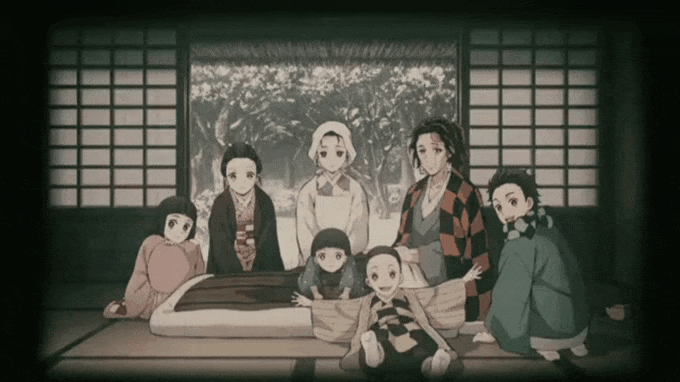

Inexplicably, this series is both exceedingly popular and heavily criticised. It is generally critiqued for its simplistic story, but I believe it exemplifies how simplicity is the ultimate sophistication. People often fixate on its stunning animation and thrilling battles, overlooking its powerful emotional narratives and seamless integration of complex themes. The series centres around themes such as the importance of family, coping with loss, and maintaining resilience and determination in the face of adversity. That said, my favourite theme in the series is how it highlights the significance of compassion and empathy, even amidst extenuating circumstances. This is a vital lesson that reminds us that we are all capable of demonstrating compassion and empathy to others within reasonable limits. Alongside its compelling narrative and dynamic battles, KNY's eclectic ensemble of well-developed characters stands out—thanks to their distinct designs and motivations—lending depth and complexity to the series.
#06 Akatsuki No Yona
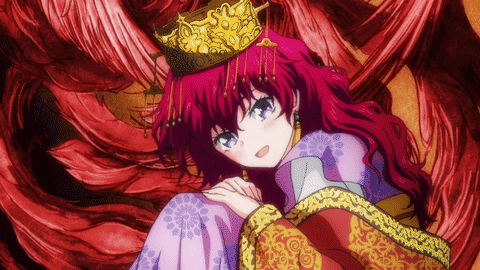
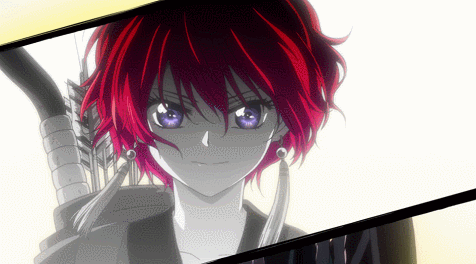
Although YOTD seems like another archetypal historical romance about a princess on the run—there is so much more to this series. YOTD is a masterful blend of romance, adventure, and drama. The series deftly reworks conventional tropes and integrates them into its intricate, fantastical setting. YOTD's multi-layered narrative and its profound character arcs—in addition to the depth of themes it addresses—set it apart from comparable series. The manga incorporates various heavy themes into its narrative—such as betrayal, vengeance, inequality, power struggles, and the connection between privilege and ignorance. It also covers more hopeful themes—such as camaraderie, courage, and the enduring power of love. YOTD's primary strength is its remarkable character development. Each of the series' characters is thoughfully constructed to embody several themes that add to the plot, while every one of their interactions helps to advance other characters.
#05 Boku No Hero Academia

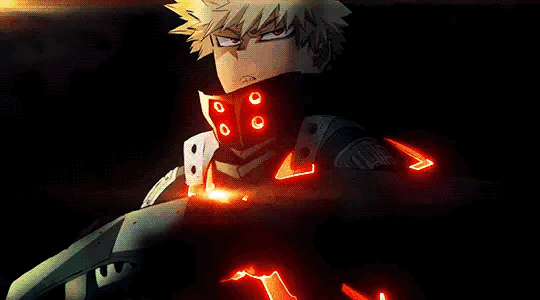
Although this series mostly garnered popularity from its compelling plotline and flashy fight sequences—its greatest assets are its well-developed core cast, significant emotional resonance, and nearly seamless integration of deep and heavy themes. Despite the series' initially light-hearted and hopeful tone, its stakes are deftly heightened by introducing darker symbolism and more intense conflicts. Its later seasons highlight the complex nature of heroism along with the obstacles encountered by both heroes and villains—thereby differentiating it from other series in the superhero genre. Some of my favourite themes that the series highlights are identity/self-discovery, the nature of heroism, power/responsibility, sacrifice/redemption as well as the importance of having bravery in face of adversity. The series' astute use of imagery, metaphors, and narrative subtext enhances thematic and character development, augmenting its symbolic value and rendering it more engaging and captivating.
#04 Fruits Basket

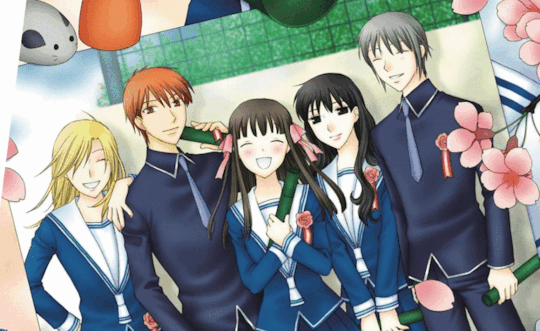
Fruits Basket has an unparalleled charm thanks to its unique blend of drama, humour and romance. This series has become a staple in the shoujo genre due to its profound character depth, compelling narrative, and immense emotional resonance. A web of multilayered character dynamics forms the foundation of Fruits Basket—where characters are not merely utilised as narrative devices, but portray the subtleties of human emotions, relationships, and development. It is precisely because the series' characters reflect real-life issues that we are able to empathesize and relate to them. The series' capacity to engage in meaningful discussions on profound concepts and convey insightful messages is the primary reason it resonates with its fans. The series weaves a variety of profound themes into its narrative, including loss, acceptance, transformation, healing, love, societal expectations, parental alienation, familial connections, and the cyclical nature of life. The series' emotional impact is established by incorporating the aforementioned themes—which not only enhance its complexity but also foster introspection and empathy within its fans.
#03 Naruto + Naruto Shipudden
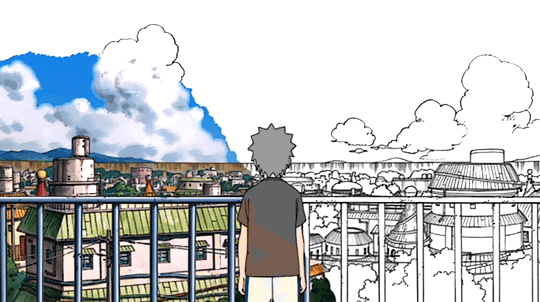
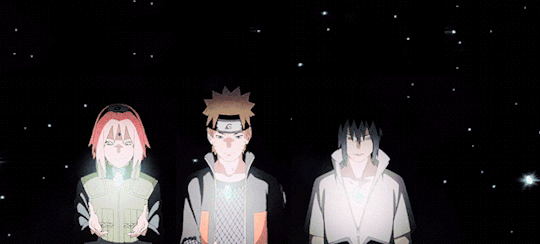
Regardless of its shortcomings, detractors cannot dispute that the Naruto series has significantly influenced pop culture—evolving the animanga industry and influencing audiences on a global scale. The series' popularity stems from its complex storytelling, emotional depth, large multi-faceted cast and exploration of profound themes. To this day, the Naruto series continues to be relevant, having cemented itself as a cornerstone in the history of the animanga industry. The series has not only inspired numerous creators, but it has also played a significant role in the integration of anime and manga into global mainstream pop culture. The themes addressed in the series add greatly to its narrative depth and resonance—not only enhancing audience engagement but also providing them with valuable lessons. Some typical themes explored by the series are friendship, personal growth, and perserverence admidst adversity. While some of its more profound themes include the vegeance, redemption, the cycle of hatred, the reprecussions of war and conflicting ideals of peace. The series employs these themes to not only enhance its character arcs and layer its narrative—but also to encourage its audience to contemplate their implications within human interactions, historical contexts and the systems of society. The series' continuing relevance as a pivotal reference for analysis and discussion is a direct result of the adept integration and complexity of these themes. Another essential component of the series is its character development which not only drives the narrative but also enables viewers to empathise with its characters. Throughout the series, we encounter an array of compelling characters whose development and interactions significantly contribute to the series' depth and appeal. Considering that this series was a significant part of my childhood, it will always hold a special place in my heart. I practically grew up alongside its characters, which has made their hardships, conundrums and triumphs all the more personal. Given this was the first anime series I completed, it was the catalyst for my current passion for anime and manga.
#02 Gintama


Let me go off script and say that I know this series' length is off-putting to a lot of people—but I promise it is absolutely worth it... Though I wouldn't reccomend this series for everyone. I myself quit this anime about 4 times despite liking the characters. However, I'm glad that something (cough opening 13 cough) convinced me to stick with it—since it has become my favourite anime now. This series is set in a fictionalised version of Japan's Edo period, where aliens have invaded the nation after having defeated its samurai. This bizarre premise serves as the foundation for the show's quirky characters and absurd happenstances. Gintama has made an everlasting impression on the animanga industry due to its distinctive amalgamation of genres, outstanding character development, and capacity to weave together comedic and serious narratives. Gintama is infamous for its comedy. Its ability to parody various sectors of pop culture, including other animanga, is second to none. The series is able to poke fun at both itself and the animanga industry thanks to its satirical take on classic shonen tropes. The series' unapologetic willingness to take risks has contributed towards it becoming a cornerstone in the animanga industry thereby influencing numerous subsequent works. The series also humorously explores an array of social and cultural issues, not only providing entertaining social commentary but also reflecting society, thereby fostering introspection and discourse on a number of topics. This not only enables it to delve deeper into its complex themes but also to surpass conventional anime archetypes. Unexpectedly Gintama is adept at balancing its comedic elements with its profundity, allowing fans to resonate with the series on a deeper level. The series' core themes include resilience, mental fortitude, honour, loss, camaraderie, platonic bonds, and maintaining optimism when confronted with adversity. Gintama's enduring appeal stems from its distinctive, diverse, and colourful ensemble of characters. Their differing personalities, experiences, and peculiarities add to the series' humour, relatability, and complexity. We witness these characters face many obstacles as they grow and evolve thus deepening our connection with them.
#01 Tian Guan Ci Fu

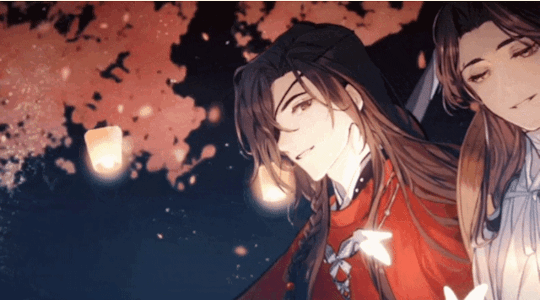
For those unfamiliar, MDZS (ranked as #8 on this list) and TGCF are written by the same author, MXTX—thus, many of my statements there also apply here. Despite consuming almost every adaptation of this series—the novel, the donghua and the manhua—I have never grown tired of it as every rendition presents a novel perspective on the characters and setting and is enlightening in its own right. This series deftly integrates action, comedy, mystery, horror, fantasy and romance—while also drawing inspiration from Chinese culture and mythology, to create a riveting story that draws you in from its start. Although I wouldn't want anyone to value this series solely based on its romance—it is undeniably its most captivating aspect with its main couple being the epitome of devotion, longing and enduring love. Similarly to MDZS, the TGCF donghua is heavily censored when it comes to its romantic dipictions under China's censorship regulations. This becomes especially noticeable when comparing it to Japanese animated BL series. Nevertheless, the production team's meticulous attention to detail ensures that the affection between the main couple remains just as apparent as in the novel. In no other series have I paid as much attention to the characters' movements, expressions, and tones as I did with TGCF. HuaLian's affection for one another is palpable through every held glance, melodic sigh, and subtly delicate touch. Consequently, this meticulous attention to detail allows for a steady build-up—resulting in an immensely authentic and sincere romance. The series' amalgamation of its fantastical setting and mystical elements with Chinese traditions and mythology augments its richness and immersiveness. Furthermore, each song in the donghua is flawlessly crafted to complement each scene—creating the ideal ambiance. The series touches on a multitude of heavy topics providing insightful commentary on social expectations—making it worthwhile for those seeking depth and complexity. Among the themes featured are duty, sacrifice, redemption, vengeance, unconditional love, acceptance, perception as opposed to actuality, and the correlation between free will and fate. One understated feature of the series that I appreciate is its deft deployment of motifs and symbolism to represent characters and their growth as well as to hint at impending plot points. Flowers, colours and other celestial symbols are recurring motifs in the series that add depth to the narrative. It is undoubtably the series' complex characters and intricate character relationships that form the core of TGCF—adding substantially to its allure. Our lead characters are incredibly multifaceted and nuanced, possessing distinct motivations and principles—while remaining charming and endearing. In contrast, each side characters in the series adds complexity and intrigue to the narrative—enriching the series without detracting from the main characters' roles while remaining well-rounded.
✧⋄⋆⋆⋄✧⋄⋆⋅⋆⋄✧⋄⋆⋅⋆⋄✧⋄⋆⋅⋆⋄✧⋄⋆⋅⋆⋄✧⋄⋆⋆⋄✧
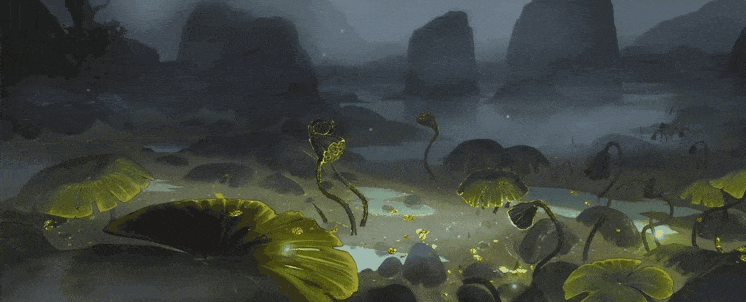
[P.S. Were any of you guys who regularly see my posts surprised by this list? I'm willing to address any questions you have regarding these entries, and I hope it encourages anyone who hasn't seen any of these series to do so. Once again I'm sorry for rambling...Hope this answered your question. ]
✧⋄⋆⋆⋄✧⋄⋆⋅⋆⋄✧⋄⋆⋅⋆⋄✧⋄⋆⋅⋆⋄✧⋄⋆⋅⋆⋄✧⋄⋆⋆⋄✧
#frostffire-asks#mytop10series#anime#donghua#manga#animanga#mxtx#shoujo#tian guan ci fu#tgcf#naruto#naruto shippuden#gintama#fruits basket#fruits basket 2019#boku no hero academia#akatsuki no yona#yona of the dawn#kimetsu no yaiba#demon slayer#mdzs#mo dao zu shi#link click#the apothecary diaries#kusuriya no hitorigoto#my hero academia#shiguang daili ren#bnha#grandmaster of demonic cultivation#mha
10 notes
·
View notes
Text
while my dracionity turned out different in the end, this was still an important post for me to write!
<:::::::::::::::::::::::::::::{[xxx()o
when I see my draconic self in my mind’s eye, or become more aware of my phantom parts (because they're always present to a degree), there’s a consistent, distinct shape.
o()xxx[{:::::::::::::::::::::::::::::>
- a long-ish mammalian muzzle, full of sharp teeth & fangs. also has a feline- or mustelidae-like nose-pad. (“padded nose”? idk the exact term for these types of critter snoots.) - brown fur of short-to-medium length. - unsure if i have scales or protective plating anywhere? might have some on the lower sections of my legs. - body is pine-marten-y in shape & length. - tail is also quite long. sleek, thick-ish, and is capable of corkscrewing around itself at least once. tapers off into a (albeit large) lion-like “tuft” at the end; like a traditional unicorn’s tail. (may be longer, and i’m just experiencing a length that’s relative to my human body???) - paws with five digits, paw-pads, & claws. unsure if said claws are retractable at all. overall very marten-esk. - ears are always in a “back facing” position, which seems to be their natural/neutral positioning. ears are large, almost fennec-like, and fuzzy inside & out like a donkey’s. - set of small nub-horns, teal in color, positioned like a goat’s or deer’s. - one of the closest placement matches i’ve seen are Trico’s (beast from The Last Guardian), but mine grow the opposite direction (i.e, toward my back).
- i do not have wings, and notably feel like i’d be incapable of (natural/non-magical) flight.
- i believe my species lived in, or at least frequented, a temperate forest environment of sorts. and/or potentially somewhere that feels like a mix of Alaska & California's wilderness? it's a jumble of fuzzy noemata that i'm still sorting through.
all this got me wondering; is there any example of this sort of dragon in wider media? in any known mythos or folklore? thus far, the closest examples i've found in these sources are Chinese & Japanese Dragons, such as the character of Haku from Spirited Away; but these aren't exacts. when i look up images & read about them in mythology texts (historical & fictional alike), i always think to myself "Kind of close, but... not it."
one fictional type i've found that sort of matches me is Imperial dragons, from Flight Rising.
however, many details just don't ring as "me." i lack wings, those prominent whiskers, full scales, or any kind of beard, my horns are much, much shorter, i could go on. bottom line, i'm not an Imperial dragon. so, i'm left with the same feeling: "Close, but nowhere near exact."
the absolute closest body-type/shape i’ve found (outside of drawing something myself) is from various original characters. there's a consistent handful of design tropes that make these characters distinctly this type of "fuzzy noodle dragon" — like a mosh-pit mix of almost "off-brand" depictions of eastern dragons. if you're in character/adoptable design circles, you may know what i'm talking about. you may even own a character like this, or be in the same boat as me.
i did briefly consider the idea i might be OC-kin, but... similarly to historical depictions & Imperial dragons, these designs feel like they’re just that; designs. not part of my identity.
"Close. Nothing more."
even this fursona/character concept i whipped up a few years ago, which has pretty much every visual aspect i described, doesn’t feel like me. that character still feels like just a for-fun-mascot or character; not a self-portrait, idealized or true-to-form.
which brings me to a label i've been ruminating over: Folcinteric (Nonhumanity).
i feel @who-is-page’s label of folcintera might really fit me, especially with the specific type of dragon i’ve described here. problem is, (and this is most likely just the imposter syndrome talking) i'm not even sure i have any mythos to begin with.
well. maybe i do. in a slightly more abstract sense.
as i said, this kind of design is not that uncommon; i'd even dare to say it's popular. popular enough that a lot of people will understand and have a fairly distinct image in their mind when you say “furry noodle dragon.” (i'm extremely curious about the origins of this design trend, and who might've kicked it off, or if this concept is a conclusion that multiple artists came to when making a lung dragon inspired design.)
so, perhaps my larger “mythology” — to potentially stretch the definition a bit — is from a subset of the dragon art & character design communities. something in me says that could count as a "lived mythology" of sorts.
and, i am still a type of dragon, one that varies in imagery/details and person-to-person lore, at the end of the day. one that is also very tied to my own personal understanding of "dragon."
dragons, in the larger scope of folklore, are typically an allegory for the wealthy, or the concept of "evil," or are simply more "neutral" symbols of power, wisdom, strength, and/or magic.
dragons were never something i feared / saw as universally "villainous," or even as strictly symbolic of any of the previously listed symbolism. my first exposure to dragons was within the Eragon/Inheritance Cycle series. due to the dragon and rider bond i saw there, "dragon" was cemented in my brain as a companion; protector, friend, but also animal. a fearsome one, yes, but not cruel or "evil by nature." not greedy, just naturally curious and drawn to "shiny" objects in the way any corvid is. sapient as any human or humanoid folk, but still as much of a beast as any wolf or bear.
publicly, i'll most likely just say "I'm a [species of] dragon," and leave it at that. the details of my identity are for me alone, and thus any further explanations or descriptions will be given voluntarily.
but even the things i keep private, i like to put names to. this is one such thing!
"theriomythic" felt somewhat like a hasty choice, though i don't mean that as a bad thing, at least for me. a bit of "my experiences fit here [within the therian label], but the species and my understanding of it doesn't [fit the definition of "only" earthen/nonfictional animals]... so i'll go with something that's close enough."
i do quite like the terms "draconity" & "dragonkind," since they're both very all-encompassing; but... i'm not sure how to articulate how that also feels like the problem (though i use the term loosely) that my brain has with them. "dragonkind," from my understanding, is more-so a label for the community itself rather than the individual. (it can be for personal use, i.e "I am dragonkind," but i don't know if it's widely used as such.) and "draconity" doesn't... quite ring the way i feel it should. it feels more like a general descriptor to preface my experiences and identity.
i could come up with my own term(s), and who knows, i might end up doing so. but at the same time, i don't want to reinvent where i don't need to. to me, the idea currently feels like calling that particular shade of lavender purple by another name, just because i can.
so maybe my flavor of dragon does fit the definitions for being folcintera. the term is supposed to be pretty much limitless within "lived mythos."
all that to say, i'm going to be trying out folcintera for myself. worst that happens is it doesn't end up fitting lol if that becomes the case, i'll find or make something new~
#folcintera#sword's journal.txt#horns of chrysocolla#dragonkin#dragon therian#draconity#dragonkind#dragonhearted#edited a smidge bc i'm tired of being shy <3
29 notes
·
View notes
Text
Proudly not watching NATLA. I don't really care what changes they made, whether it had been entirely the same or another hilarious fuck-up like the non-existent movie. Like whatever they did to fuck up the story I get if you're invested in the adaptation so fair enough
What I actually care about is the fact that it even exists at all. Even with the very rare cases where it actually brings something worthwhile to the work (I hear the Netflix One Piece is good? idk), why bother adapting animation to live action? Because nearly every time there is no artistic motivation to do so at all, merely the blatant cynicism and that sneering reduction of animation in the entertainment industry as just "the means of making cheap children's cartoons" that just refuses to fucking die already.
In general I find adaptation to rarely justify itself artistically, especially if the source material was really bloody good already. Of course great adaptations exist, sometimes from elevating/subverting it's source (or in the case of Starship Troopers for example, taking the everliving piss out of a pile of shit), sometimes merely by translating the work into a new medium that lead to interesting new avenues for expression and storytelling provided by the change in medium (and by this I mean wholly different mediums, like between book/videogame/film or show/play), or both.
Changing between live-action and animation as a means of making film/TV is not a big change in medium to provide entirely new storytelling opportunities, BUT 99% of the time, animation is more effective. Casting is never dependent on an actor's irl appearance, the method of animation can even be changed at any point to serve a function, animation (with sufficient time, resources and passion) allows total control over the entire visual presentation of the work. And by such total control over the presentation alone, suddenly you are open to an infinity of possibilities in choreography, character expression, visual comedy, tone, colour, environment etc. etc. You are no longer limited by what can be captured in physical reality on a screen in any one take. You are limited by what you can fit on a 2D screen.
What we call live action today in mainstream media is not really live action, it's in large part a corporate compromise to extend just past the financial and physical limitations of practical effects to achieve whatever the script needs the screen to do via CGI. Which is just 3D animation, but it's completely focused on adhering to a visual realism. Of course extremely good and thoughtfully presented live action works still exists; if it's filmed and/or presented thoughtfully and meticulously enough, then it can be similarly poignant as an excellent work of animation. But outside of like, auteurs, this does not usually happen.
This particular example is not from some troubled source material with lost potential or any severe caveats in visual presentation. This is fucking. ATLA. Like, the animation isn't as massively funded as a Disney Renaissance ig?? But for 2000s cartoons, it was insanely forward and completely holds up today, it's still cherished today. And ATLA in general was a masterpiece. It still IS a masterpiece!! It hasn't gone and fucking died in need of a replacement!!!
So there's just no way I can see it worth my time to dedicate my time to an inferior version of an awesome show that already exists.
It's just obvious that this show only exists so Nickelodeon can boost the profitability of [BRAND]. Love to the good honest crew and actors for the show, love that they're carrying out childhood dreams and getting to do promos with the original VAs and all. Wake me up when the animated ATLA films come out.
5 notes
·
View notes
Text
If you asked me the question “would you prefer a work that is good but it doesn’t me or a work that represents me but it isn’t good?”, I would simply refuse to answer this question. So,, with this in mind, I’m going to give my very personal thoughts on representation in media. Due to matters of space (this essay is 2.5k words long, I could've written more), I’ll just focus on national representation.
Representation has been a hot topic in popular discourse. At first I thought why is does this have to be such a theater for essentially discursive civil wars? But, as I absorbed more ideas, I can see why it’s so important. If I say that I prefer a good work than a representative work, I would be lying the moment I see a character in a not very good work and say “wow, this has just my experiences and issues”.
The biggest problem is that this is issue is so complex – the academic definition of complex, in which it’s not possible to separate an issue and analyze it everything else constant – I mean, in other words, representation isn’t everything that makes a person pay attention to a story. Speaking as a Brazilian, why do I sympathize, judge to be relatable characters with names that sound nothing like the names of people around me?
During all my life, I’ve been fan of stories produced in other countries, that are imported just because it’s successful in central countries, the Global North to use a common academic term. If I go to a bookstore, in the sections of fantasy and sci-fi, I’ll just see American and Western European names and if I see a name outside this, I’m pretty sure it made some success in the central markets. It feels like fantasy and sci-fi aren’t really genres that authors from the Global South really engage or readers want to see.
I exaggerate, obviously. If I search a little, it’s not too hard to find communities of Brazilian fantasy and sci-fi writer. Plus, traditional literary genres and horror seem to be genres resistant to this issue, mostly because (I believe) they are genres that deal directly with issues directly related to the people of a country/region, so they have much greater chances of having the most visible spaces in bookstores than other genres.
Plus, Brazilian stories were fundamental to my formation, especially Turma da Mônica comics (available in English as Monica’s Gang). Especially in the 1990s, Mônica comics had an amazing pacing, much better than anything else written. Recently, I started reading the webcomic Rei de Lata (Scrap King) and it’s one of the best written superhero-inspired, dystopia works that I’ve read recently, but it’s written in Portuguese and it doesn’t have the same distribution network as the big ones. But still, the number of foreign stories is much larger. And I’m part of the problem, as I will explain below – spoiler: I’m writing a webnovel in English instead of Portuguese.
I’m a fan animation and if you read this blog, you might guess that I like anime. I really enjoy how it uses the medium so creatively. It’s funny if you stop to think, because it tells the stories of characters who have nothing to do with Brazil. And yet I can see their struggles being relatable or interesting to others. But I have to admit I’m just interested in Japanese animation, people always say most weebs that enroll in Japanese studies courses abandon after one semester and I think I’d be one of them (to the chagrin of my friend); but “anime”, as a umbrella term, is a weird style, I tried learn how drawing for a while (stopped because I’m too old, anxious and non-innocent enough to be a visual artist) and one of the lessons I learned in practice is how weird anime is, in terms of realism.
And yet, I could mention so many series and characters that I just love. These stories have elements that can transcend the specific cultural references and can be something that’s accessible and enjoyable for people so far from the original geographic and historical context. And it’s not like that: we still see adaptations of legends from the Ancient Greece yearly. The stories of Hercules, Jason, Odysseus still inspire so many adaptations and retellings. We reference them liberally.
Well, now that I have the age I have and the degree I have, I can ask what makes the stories of a country/culture/region more accessible than others, to the point I know more stories from other countries than mine. The answer is simple: these central countries managed to make industries out of it. As much as writers want to produce art, the economy needs to be fed. The paradigm of companies of this economy is that the shareholders are the most important entity, in the sense that companies must serve them first (and only according to more radical adherents). The average shareholder – not the kind that buys 30k worth of Nintendo shares just to ask why they aren’t making a new F-Zero – doesn’t care about art, they care whether their money printer is working or not and will threaten to leave if their money printer isn’t printing money. Think of that next time you see a pointless Disney live-action remake.
So, the creation of cultural industries mean that the talents will simply be concentrated in certain locations. If you watch a Brazilian movie, you will see that, in the intro credits, it’ll take five minutes to go through all sponsors. This concept is completely alien in a Hollywood movie. In addition to the highly competitive environment, they will prioritize stories that are easier to get high budget, that have an acceptable risk-return ratio and so on. One of the current main tenets of marketing is to create a representative consumer and the more narrowed your product is to your representative consumer, the higher the chances of being a success, even if it doesn’t make a lot of money.
Writer, then, have to live close to the industrial centers. Movies, to use the most obvious example, are highly technological products, that move lots of adjacent industries and services. Not just because they’re closer to their bosses, but because they can share experiences and improve each other. And so the newest technologies. There are technical aspects to the writing of anything and the more distance you are from these centers, the chances of you producing a good work become lower. Do not underestimate networking – if there’s a class in my masters’ that messed me up was Social Network Theory because you can prove with data points that no matter how hard you try to a position, chances are you’re going to lose said position to a person who will earn the double, doing half the work, just because they’re better connected than you. So reading the room, dealing with the crew and, especially, who’s funding you is a trait indispensable to get your work done in a way that’s acceptable to you. Living far from these centers will lower your networking. And, because of them concentrating all these traits, they can afford more failures than the rest – failure affordability is something ignored in technological analyses, lots of projects will fail so that one succeeds, piles of garbage to produce one golden product.
Lacking this funding, technology and networking makes a content creator from the Global South cannot compete well with what they have (not just the Global South, central countries such as France have always combat the influx of American media). So, what do they have to do? Either adjust expectations to a (much) smaller market (in which the same issues of the main centers exist, just in smaller scale) or move up to the industrial centers. The second option requires a lot of planning and essentially shoot in the dark, which means there’s a chance of failing, and you’ll still be competing with others.
Representation is also subjugated by this economic logic. Once a writer asked me about representation of Brazilians in media. Brazil has over 200 million inhabitants, which means it’s a massive market to be explored, so they have an incentive to make a character Brazilian because it might attract Brazilian viewers, independent if it’s accurate or not. I recently watched Casually Comics’s video about Yara Flor, a Brazilian Wonder Woman successor, and she’s a half-Native Brazilian, half-Ancient Greek semi-goddess. I enjoyed that Brazilian folklore was represent, but I haven’t seen the comics, but the comment section seems to have some agreement that her characterization resembles more the experience of Hispanic Americans than actual Brazilians, who don’t necessarily have the same experiences (I lived in the US for six months and I have absolutely no plans to ever go there for more than a week ever again; a lot of Hispanic American writers prefer to write about the experiences of living in two cultures because it resonates with them and their audiences, but that doesn’t interest me, so if I’m reading/watching their stuff is for other reasons). I really wish I was in the meeting that decided she’d be a Brazilian character.
And, of course, there’s the issue of what Brazil is being represented. Other Brazilian regions than the Amazon, Rio de Janeiro and, sometimes, São Paulo, are virtually forgotten (especially the Northeast, which is unfortunately subject of prejudice in southern areas) and they have very different cultures that a foreigner might not be aware of. And that’s because Brazil is big. Take a less populous country, like Paraguay or Uruguay, I wonder how much they are asked about representation, like that writer asked me. And this is not something that people can easily deny, we like to see ourselves referenced in other works. A small example of how representation matters (and because it’s small, I feel it has more power) come from a fanfic – I had a friend who was writing a megacrossover between various mecha shows and he referenced Luxembourg being defeated by the fic’s enemies; Luxembourg is a very small country, known for being a fiscal paradise, and yet a Luxembourgian reader was elated to find his country represented.
The question is why do we have to live in such a representation limbo? Why do we have to wait the unlikely chance that a talented foreign writer has a special interest in our culture and present the story based on it to be profitable enough to be produced and distributed? It’s like the ending scene from Cats! I only watched the reviews of that terrible 2019 movie, but I can’t help but to think of that, different cultures are waiting for their name to be called and be allowed in the balloon. I feel the debate of representation is like that. Instead of relying on the cost-benefit analysis of large corporations, why can’t we decentralize the production of stories? Well, their massive distribution and logistics networks is an easy answer to that. But that also create a very uncomfortable problem because everybody wants to be represented, but there’s a limit of what can be done because world-reaching movies/books/comics/series are expensive and risky.
Representation is also good. One of the most admirable things of the Encanto movie is how it’s a magical realist book adapted to the theater. There was some effort put on it. But if it was bad, would it be a valid form of representation? I refuse to answer that.
Another thing that made me write this is my interest in Chinese gacha games, like Arknights and Genshin Impact. I feel the stories of those games have a better sense of the problems the Global South experiences (especially Arknights on the contradictions of economic growth), since China is still technically part of this group, so they offer something that American and Japanese stories kind of lack. But seeing leaks of what Natlan is supposed to be makes me feel it's going to cause a very large representation civil war when it comes, and I think they’ll make a…subpar work in representation. Natlan is supposed to be based on Pre-Columbian America, but, in a world that has nations entering the equivalent of Modern Era, it’s rather questionable, especially because Pre-Columbian America had civilizations and advanced national entities. I care because…I live in this side of the world, even if I have little contact with my country’s native culture (reminder: the Brazilian racial democracy myth is a myth that hides the violence that was the construction of the national identity), I feel a sense of obligation, and I like Genshin, but I’m not part of Genshin’s primary demographic target and I don’t think a lot of people that participate of the discourse knows that, so my opinion doesn’t really matter to MiHoyo. Still, there’s a chance they do something right. I like the channel Accented Cinema because his videos make a point that even if representation is not correct, if it’s made with love and respect, it’ll still be something valid, something that can a mark on someone.
So, the question of “why these stories that have little to do my context influence me so much?” remains unanswered. Due to their logistic structure, they have larger chances of resonating with an international audience. I was going to talk more about politics, but, no, the text is already too big. But I want to talk about how I’m part of the problem here.
I started writing fanfics in English because I started reading them and I said to myself “I could write as good as a native and I could practice my English”. I was kinda full of myself, but I really wanted to train my English because that’s what people to do have an edge in this competitive globalized society. So 15 years later, I’m writing an original novel about a girl in Japan go gets isekai’d to a fantasy world, because I like Japanese animation and other media (like Touhou, this exists because I thought the gag bullet hell videogame series started by a drunk programmer with interest in Japanese mythology was awesome) because I like isekai and I see it as a medium for good storytelling on cultural shock. I am not writing it in Portuguese because I wanted more people to read it, including my international friends. The result is that my novel is a marketing nightmare in its premise and most of my friends aren’t really interested (a friend was so concerned for months and she finally confessed one day she didn’t like it with tears in the DMs, but I said that I noticed that and I was waiting for her confession, because I wouldn’t just tell her in her face, and ended “no worries, nobody does”). Like a Brazilian saying says “you can take a donkey to the river, but you can’t make it drink”. I wonder what would happen if I had written in Portuguese…probably nothing would change.
Culture is made of many influences, sometimes they compete, sometimes they synthetize, but, having a degree in economics, we should remember that economics was called the “dismal science” and I see this dismality every day in the globalization, to the point I’ve asked myself if it’d be better if we never left our swamps and hovels. I know the answer to this question is negative, but seeing all the negative consequences in the history (especially the Atlantic Trade), it makes me weak to answer no…
4 notes
·
View notes
Text
umineko noodling part 1
I don't think tumblr has specific spoiler-hider stuff? so uh umineko spoilers below the cut
I'm reading Umineko and I'm in that awkward place where I'm really invested and interested, but can't look up anything online because it feels like any meme or fanart has the possibility to be a spoilery deathtrap. It's gonna be a long journey but I gotta keep my head down until the end.
So to alleviate some of that loneliness, I thought it would be fun to keep a kind of journal where I can record my thoughts on the story as I progress, and can theorize in real-time and then reflect on what came from it. This in itself feels weirdly like a move inspired by the game and its love of logic and inversions; I can’t ‘take in’ information about the game because it risks giving things away, but I can ‘put out’ information, because it will only be reflecting my very-limited understanding of things in the current moment.
The game (story? I’m not sure how to properly refer to it) has been interesting so far though. It definitely does have some of those mid-aughts anime vibes (I think it came out in ‘07) with the honorifics being translated directly (George-aniki) and some of the characters feeling a little like stock tropes from that era, though now that I’m deeper in it seems like they just used those tropes as a jumping-off point, or rather that the tropes were deliberately misleading in order to hide the characters’ real depths.
I’ve also been interested to see what the VN format brings over just having the story presented in prose. I’ve seen a lot of this before with other VN-adjacent games, but the gameplay could often distract from them so this is an interesting case of being able to totally focus on games as a text-presenting medium. Music has been maybe the most striking aspect so far; the game’s music is good, and used to good effect to punctuate certain scenes or set different moods - especially right when a mood swaps the the music kicks in to highlight the new vibe. Sound effects and being able to pace the appearance of text can create cool effects as well; they help the text ‘come alive’ in a way that can be difficult when it’s just a wall on a page or screen. You can replicate characters’ speech speed, or have words appear one at a time for extra emphasis. Or you can have page transitions accompanied by sound effects to help really sell tension or impact, like a door creaking as it opens before the text appears describing what’s happening in a room. This is also something that shows up in a lot of games, but gets to really take center stage in a VN.
And of course there’s the ‘visual’ portion of it; character images and backgrounds. I’ve been enjoying the ‘original’ character illustrations; they’re less polished but have a personal charm as a result. I also like that they're framed much closer compared to the updated art - it feels a bit more personal to me and less like abstract concept art. Particularly a fan of Natsuhi-with-a-gun.


But just being able to see characters as they speak, or see their expressions change in response to things helps create a new layer of engagement in the story.
I enjoy its Zero Escape-style long digressions on random topics, like the whole thing about Maria being in her growth period to explain why she’s such a weird little gremlin about black magic because she’s trying to create a sense of individuality so she can stand out from her peers. Basically it was a small dissertation on chuunibyo as a concept. And I just like when media was clearly made by someone with an intense interest in something that almost can’t help but spill over, like the antiquing mini-arc in HunterxHunter.
It is also quite good at sticking the landing on its logic-puzzles and reversals, very reminiscent of Phoenix Wright in that regard. ‘Spinning the chessboard’ even kind of evokes the idea of a ‘turnabout’ from Phoenix Wright. I like that it’s non-interactive though because I think that lets them be much more elaborate with their puzzles since the player solving them is not gating progression. If you want to engage and reason about them alongside the characters you can, but if you just want to know what happens you can do that too. I’ve enjoyed trying to get stuck in alongside them, which is part of why I want to have this record of my thoughts and impressions about the various puzzles being presented.
Oh also one fun thing is that you can swap freely between Japanese and English. I imagine for a game whose primary function is rendering text, this was pretty easy to implement, but as someone trying to learn rudimentary Japanese it can be fun to look at certain passages to see how things are rendered, like finding out that when Battler refers to the killings as a 'game' with rules, he uses the katakana for 'game.' I think that's a really common thing in Japanese (eg calling arcades 'game centers') but it was fun to be able to poke around in the original to confirm, or to see if he was maybe using some other figure of speech originally. I was also curious about the translation of Maria and the servants explaining to Battler that Beatrice " 'exists' " - it turns out they were saying " 'い'る" which is the verb for 'to exist' but with an added emphasis. It's just neat to be able to satisfy my venal curiosity like that!
Anyway I've got another writeup for the first ~10 hours of the story that I'll post later. This was fun though.
1 note
·
View note
Note
hi hi! you can call me ren (or cassette or alt or w/e permutation of my discord handle and display name you wanna workshop), i’m 29, she/her, and exceedingly queer (and mentally ill!). i have the ability to type in proper sentence case just fine, but this is how i talk casually, and how i communicate ooc!
i’m a novella/multipara writer whose word count fluctuates depending on the scene. description heavy scenes like starters, scene transitions, new locations, etc, tend to be long. i’m talking in the 2kw without blinking territory, sometimes going all the way up to 4k (and could probably go 5k if my partner was similarly long winded askdjfg). but then for things like dialogue heavy scenes or fight scenes that require a lot of quick, decisive actions and decisions, i can go as low as about 200-300w. because of this i don’t at all expect you to mirror me post for post, but i do ask that bare minimum you’re comfortable at least hitting the 1k range, as well as comfortable with receiving long fuck off posts from yours truly askdjf
i write third person present tense, and i will write any gender and sexual orientation you ask for! i’ll be looking for either canon x oc or oc x oc for my side, which will be m/f, but my f!oc is queer herself, so it’ll be a queer flavor of m/f alskjhdfg. for your side! i am happy to write anything. canon, oc, male, female, trans, enby, whatever you want, just ask!
i do ask that any potential partners be preferably 25. i also ask that we double, unless you only want to play the love interest i’m ask for against my oc, in which case we don’t have to double. but i’d love to double for you! i want to double for you! i will even triple for you, if you want a love triangle or a poly relationship.
my mediums are discord and email, exclusively!
i also have some limits i will ask you abide by. i do not want you to godmod my oc, i do not want you to discuss the topics of: alcohol, drugs, smoking/vaping, or substance abuse in or out of character (this includes meme images, emojis, etc. i don’t want to write about it i don’t want to see visuals of it, and i am very serious about this. they are limits and triggers. please respect them like you would anyone else’s triggers even if they’re not as commonplace). i also don’t wish to write about sexual assault or abuse, or any sort of incest/pedophilia/the usual limits for this community. additionally, i do not write smut. i fade to black, and that (along with my limits) are non negotiable. and of course likewise, i will respect any limits you have!
with all of that out of the way, we can move onto the fun things! today i am looking for
star trek: the next generation
heads up and fair warning! i’m in the middle of a rewatch, and the last time i saw this was?? maybe twenty years ago. anywhere in the 15-20 range at least. so i don’t remember a whole lot, and i’m only in season two so far. but i would loooove to write in tng, it’s just?? so lovely ???
against my f!oc, i am looking for you to write one of the following: riker, an oc with a faceclaim i choose, or a canon transplant from another media (i would be looking for primarily tony stark or david xanatos)
in return, i can write anything you like! though i do have some canons i’d be especially excited to write for you if given the chance! these are: data 🤍🤍🤍, geordi 🤍🤍, picard 🤍🤍🤍, deanna 🤍🤍
if interested, please feel free to reach me at my discord [altimit.os] or my email [altimit.osx (at) gmail (dot) com]
altimit.os
altimit.osx (at) gmail (dot) com
#twenty-five and over#oc#oc roleplay#oc rp#mxf#mxf roleplay#mxf rp#ocxcanon#ocxcanon roleplay#ocxcanon rp
0 notes
Text
make it so | st:tng 1x1 search
hi hi! you can call me ren (or alt or w/e permutation of my discord handle and display name you wanna workshop),
i’m late-late 20s, she/her, and exceedingly queer (and mentally ill!). i have the ability to type in proper sentence case just fine, but this is how i talk casually, and how i communicate ooc!
i’m a novella/multipara writer whose word count fluctuates depending on the scene. description heavy scenes like starters, scene transitions, new locations, etc, tend to be long. i’m talking in the 2kw without blinking territory, sometimes going all the way up to 4k (and could probably go 5k if my partner was similarly long winded askdjfg). but then for things like dialogue heavy scenes or fight scenes that require a lot of quick, decisive actions and decisions, i can go as low as about 200-300w. because of this i don’t at all expect you to mirror me post for post, but i do ask that bare minimum you’re comfortable at least hitting the 1k range, as well as comfortable with receiving long fuck off posts from yours truly askdjf
i write third person present tense, and i will write any gender and sexual orientation you ask for! i’ll be looking for either canon x oc or oc x oc for my side, which will be m/f, but my f!oc is queer herself, so it’ll be a queer flavor of m/f alskjhdfg. for your side! i am happy to write anything. canon, oc, male, female, trans, enby, whatever you want, just ask!
i do ask that any potential partners be preferably 25+. i also ask that we double, unless you only want to play the love interest i’m ask for against my oc, in which case we don’t have to double. but i’d love to double for you! i want to double for you! i will even triple for you, if you want a love triangle or a poly relationship.
my mediums are discord and email, exclusively!
i also have some limits i will ask you abide by. i do not want you to godmod my oc, i do not want you to discuss the topics of: alcohol, drugs, smoking/vaping, or substance abuse in or out of character (this includes meme images, emojis, etc. i don’t want to write about it i don’t want to see visuals of it, and i am very serious about this. they are limits and triggers. please respect them like you would anyone else’s triggers even if they’re not as commonplace). i also don’t wish to write about sexual assault or abuse, or any sort of incest/pedophilia/the usual limits for this community. additionally, i do not write smut. i fade to black, and that (along with my limits) are non negotiable. and of course likewise, i will respect any limits you have!
with all of that out of the way, we can move onto the fun things! today i am looking for
star trek: the next generation
heads up and fair warning! i’m in the middle of a rewatch, and the last time i saw this was?? 15-20 years ago, so i don’t remember a whole lot. i’m only in season four so far (around e3). but i would loooove to write in tng aaaaaaa i just rly love its vibes askjkdf
against my f!oc, i am looking for you to write one of the following: ❤️❤️❤️ riker 💛💛 an oc with a faceclaim i choose 💙💙 or a canon transplant from another media (that i choose)
in return, i can write anything you like! though i do have some canons i’d be especially excited to write for you if given the chance! these are: 💛💛💛 data 💛💛 geordi ❤️❤️❤️ picard 💙💙 deanna
if interested, please feel free to reach me at my discord [altimit.os] or my email [altimit.osx (at) gmail (dot) com]
you can also reach out on tumblr for initial discussion, but please know i do not roleplay over tumblr!
#1x1 rp#1x1 roleplay#1x1 discord#1x1 star trek#star trek roleplay#star trek rp#star trek 1x1#tng rp#tng roleplay#captain's log
0 notes
Text
so this discussing of What Makes A Robin is super interesting to me, and the difficulty is that. well. Robin is a superhero, sure. but Robin is also a mythological figure from Americana, someone who's had great impact on the fiction landscape and what it means to be a duo or a sidekick at all. which is two very different things!
the superhero one is pretty basic, for me. I like it because you can use it for any superhero identity (even if there will sometimes be debate about first use/origin depending on hero, especially if you have to debate diegetic and metafictional uses) not just Robin. I have this tiered as follows, where each tier is a bigger circle of Robins (or whichever hero you're using)
invented the name and costume
used the name and costume as their exclusive identity (in some cases, costume can be taken to mean logo/voice)
used the name and costume as their primary identity for an extended period of time
used the name and costume as their primary identity for a short time or a one off
used the name and costume as a frequent identity among others, or as a recurring special case
used the name and costume sometimes among other superhero identities, but counted it as real
used the name and costume in a non-real way, such as to disguise the real hero identity, to trick a villain, as a stand in or to soothe the public, or for fun/reasons unrelated to heroing
used the name OR costume exclusively
used the name OR costume primarily
used the name OR costume frequently
used the name OR costume ever, sincerely
used the name OR costume ever, for another purpose
referred to in text in reference to the superhero
referred to out of text in reference to the superhero
so each of these would add more and more people you might consider Robin - although I don't distinguish for unsanctioned uses of the name and costume, which some people do - and I think is pretty straightforward to fit to characters.
but in a mythological context, I think the standards are pretty different, and don't require use of the name or costume at all. I definitely don't think they need to be Batman media, or even comics at all. a lot of fiction set in totally real-world places would even meet these standards! I made an argument that Rage Against The Machine from Real Life met these standards!
so, in this context, A Robin needs:
a Batman figure (although not necessarily a figure that would meet the mythological constraints of A Batman)
they are being both protected and instructed by their Batman in some sense, in a cooperative way
their skills are less prominent or relevant to the story, but their skills are neither a subset nor superset of Batman's. there should still be a lot of overlap
they represent the human/powerless. all skills they have must center hard work/practice in their narrative placement, rather than luck, outside intervention, or innate specialness. however, in cases where that skillset is the standard based on worldbuilding, they can have an other than human set of skills.
they fight greater than human powers. whoever they fight must either have superhuman abilities or represent superhuman powers like systemic injustice or organized crime. they are framed as at a starting disadvantage to those powers.
they are distinct from their Batman. in a visual medium, this must have some element of visual distinction, but in another medium, it could be anything. this should be noticeable to other characters within the story, and be a way that they're contrasted from within the constraints of the story.
they're distinct from their Batman, but from outside the story. this is based on genre convention and the types of stories being told using the Batman and Robin.
they offer the youth perspective, one both more impulsive and with stronger faith in itself. this can be right or wrong, but should be a mix of the two depending on circumstance. it should also benefit from Batman's experience and planning in contrast.
relatable to the audience in some way
distinction of public/personal identities
but! this can't be applied to a character wholesale, only within a story or arc. so it addresses whether someone functions as a Robin within a story. overall, I think the question of Robins would then be either how often that character has functioned as a Robin, or what percentage of their time in costume they functioned as a Robin as opposed to another mythological figure. this will include people with totally unrelated identities!
1 note
·
View note
Note
Wait a minute; you seriously think that dreadlocks are a racist characteriture? I know people tend to grasp for straws when looking to cry “racist!”, but this? Take your own advice and do some actual research before you virtue signal.
WOO this reply turned out way longer than I expected it to! But since I'm chosing to interpret Anon's question as earnest and their complaint as sincere (though I am giving them far too much credit), I figured we might as well do a deep-dive. The sentences that are in bold are the main ideas, and the sentences in large font are the wider takeaway.
Actually, it ended up being so long, I made an audio recording in case y'all have ADHD or dyslexia! The audio's not great and I mess up a lot while talking and I do have a speech impediment, but I hope it's helpful.
Again, I want to emphasize the fact that I don't think RR is a racist. He's just a guy with some unaddressed biases. Also, it's worth noting that I am not black, and someone who is could probably make a better argument (Black Riordanverse fans— if you feel comfortable, reblog with your own opinions please!)
That being said, yes, when you make non-human villains with features associated with black people, you are effectively dehumanizing and villainizing black people.
When writing books, especially high fantasy books (though RR's works are decidedly not high fantasy), people must draw upon real-world cultures for inspiration.
This can put authors in a moral conundrum. They can either a) take inspiration a single culture or continent, making the story deeply rooted in the ideas and elements of one people, or b) they can take inspiration from multiple places in the real world and make divisions as we do in the real world. For choice (a), take small-scale fantasy stories that take place in Medieval Europe, or stories like Raya (I mispronounce her name in the audio; please excuse me) and the Last Dragon, which nearly exclusively draws upon South-East Asian experience and appearance. For choice (b), take stories that involve massive battles and multiple cultures, like Star Wars. The risk that comes with choice (a) is that you can end up with a homogeneous people, and that necessitates the exclusion of other ethnicities. The risk that comes with choice (b) is that you can racially code your fantasy races/species.
Racial coding is a technique used either consciously or subconsciously by writers when creating fictional races. It occurs when authors draw upon real-world appearances and cultures to portray fictional appearances and cultures.
For example, the trope of the "Bazaar of the Bizarre" is widely prominent throughout media. It depicts a bustling marketplace, often full of oddities for purchase and theives. This trope is highly inspired by real life bazaars and souks and the like, and the correlation made in media between these marketplaces and debauchery instills in the audience a feeling of distrust towards these establishments and the racial groups with which they are associated. You watch a movie where a guy gets robbed on an alien desert planet while traditional Indian music plays, and then you pass a couple of guys listening to traditional Indian music, and you hold your wallet a little tighter.
Or maybe there's a fictional race that has medium-toned skin purple skin, small and slanted eyes, and straight black hair. Okay, we can tell from that description that these people are meant to be visually similar to Asian people. These characters are racially-coded. And say that this fictional race is also known for bad teeth and addition problems. These are negative stereotypes associated with Chinese people, and since we already see a visual correlation between Asians and these fictional purple people, that negative stereotype is reinforced. That's called negative racial coding.
Now back to Rick Riordan.
The Giants described in the Heroes of Olympus books almost all have non-human skin tones and hair described as being "braided," or, in Polybotes's case, "wild." "Braided" could mean cornrows or box-braids. Polybotes's "wild" hair is easily interpreted as an Afro or other natural black hairstyle. For Enceladus, no words were minced; he explicitly has "dreadlocks, braided with human bones."
There is no question about it; the HoO Giants have their hair in styles traditionally associated with black people.
So we visually correlate the giants with black people. Now that that's established, let's look at their behavior.
The giants are cunning. They are downright, unquestionably evil. They can be manipulative, or they can be brutish, but they are all destructive. Most importantly, they are inhuman.
The Giants' inhumanity is not just in their appearance (with their dragon legs and all) but in their treatment of humans. Enceladus in particular is a great case study; he is preparing to eat Tristan McLean if Piper does not comply with his commands. Cannibalism is a practice particularly associated with native African tribes, and it remains as a nasty stereotype that implies a lack of humanism in Africans.
I want to draw attention, too, to the fact that not only does Enceladus have dreadlocks; his dreadlocks have human bones in them. This little detail ties together (literally) the features Enceladus bears that relate to blackness and the absence of his compassion for humanity. His African hair is closely associated with his inhumane nature.
The effect here is that features that imply blackness are correlated to evil and savagery.
"Oh, but Jules!" you may say. "What about Orion? Orion is the only giant to be explicitly described as human-colored (the color of wheat-toast) and he doesn't even have braided hair like the other giants! His hair is short, and straight, and swept back!"
Oh, yeah. Let's talk about Orion, the exception that proves the rule. Orion isn't black coded. And that might have something to do with the fact that Orion is supposed to be physically attractive and human-like.
When your only handsome giant who could "pass for human" is the only one who doesn't have braids and who explicitly has a real human skin tone is white, and the rest are barbarous and black-coded, you have a problem.
(Concession— Periboia is described as blond, which may imply that her human half is white. We don't really know, because RR, like most white authors, has a habit of only describing a character's skin tone when they aren't white. However, the fact that she is a muscular, physically large woman, may be seen as enough to dehumanize her.)
And all of this is ignoring that a couple of the giants are explicitly described as dark-skinned black.
Like, "coal black." And HoO isn't the only series where RR does this; his Muspelheim giants are depicted the same way— though, to his credit, he does go out of his way to say that the "black one," Surt, is very sexy.
Now, let's talk about intention. I do not believe that RR set out to make black-coded antagonists. I think it just came naturally to him, and that's also worth examining.
This is a common trope— so common that RR probably didn't question it. In fact, he was probably heralding back to the "great" authors of old.
Like I said in my original post, RR was not exactly the first author to make his villains with black features. There's an expansive history on the subject, and a lot of it can be traced back to J. R. R. Tolkien and his orcs. Here's a little excerpt from a novel written by Johnathan Coe (admittedly, another white author), The Rotter's Club:
"Surely he must have noticed that Tolkien’s villainous Orcs were made to appear unmistakably negroid. And did it not strike him as significant that the reinforcements who come to the aid of Sauron, the Dark Lord are themselves dark skinned, hail from unspecified tropical islands from the south, and are often mounted on elephants?"
Worth noting here that Tolkien's dwarves were also Jewish-coded, though that's somewhat off topic (unless we wanna start talking about Rowling again, who herself made Jewish-coded goblins).
Anyway, Anon, I am not "grasping at straws." And I have, in fact, done my research. The point of my original post was not to "virtue signal" but to bring awareness. In fact, I was actually defending Rick Riordan in that original post. Because, at the end of the day, this is a trap any author can fall into.
TLDR; Racial coding happens when a fictional species is given features that allude to a real-world ethnicity. Negative racial coding occurs when those features accompany negative stereotypes about that same real-world ethnicity. Rick Riordan (probably inadvertently) does this while writing the Giants in his Heroes of Olympus series. His Giants have hairstyles akin to black hairstyles, and are sometimes described as having black skin. Since the Giants are portrayed as ugly, evil savages, the subconscious message is that black people may be ugly, evil savages. This is a mistake a lot of authors make, though; it's not solely RR's vice.
#Anon you would make a great sock puppet#part of me wonders if you are actually an RR crit who wants to be like 'see?? there ARE extremely ignorant people who oppose us!'#though you're probably just a troll. lol.#RR crit#rr critical#heroes of olympus#hoo#i'm being too nice to RR again#riordanverse#rrverse#pjo#percy jackson
268 notes
·
View notes
Text
legit i am so so hype for the cthulhu campaign
it was supposed to be just a one-shot and idk what happened to that plan but boy am i glad it got changed
i don’t like horror in visual media, for the most part. and i don’t like character death in most stories, especially major character death, bc it just greatly upsets me in a way i don’t enjoy even a little bit, even if it was the best choice for the story
but horror in non-visual media? mmm i’m listening. and if i go into a story in a non-visual medium where the threat of a likely death is most of the appeal? then the deaths are still somewhat upsetting but are mostly AWESOME bc OOOOH THERE IT IS
and charlie is gonna pop off with the horror and with the deaths of whichever pcs he can snag
#shoutout to the 'choose your own mistakes' yt ego fanfic series for being my first exposure to that kinda thing outside of visual media#i can't do horrible deaths in visual media for mutliple reasons lol#jrwi#gossamer thoughts
22 notes
·
View notes
Note
Hello, I hope you’re doing well ☺️
I’m writing a book set in a magical school, one of the characters is a user of powerful light magic. A symptom of magic use in this story is it changing the appearance of its user, in this case, this character’s eyes glow.
Due to her use of magic, she has gone blind, even before this major change she had had degrading eyesight for a while due to the light exposure. I want to portray her respectfully but I am worried about the fact that she did not go blind ‘naturally’, I guess. Of course she’s not the only blind character, not even the only blind magic user; there are a few through the story. This character has pretty much no issues with the fact that she’s blind, she was warned that it was possible and decided to continue her talents anyway; it’s not portrayed as a sacrifice for her magical abilities and doesn’t make her a martyr or anything like that. At one point her magical changes are temporarily reversed and her eyes are described as ‘much like they used to be, although not focused anymore’. I really do want your feedback, and thank you for your time.
Hello nonny.
I’m doing well, thank you.
I have no problem with a character’s eyes glowing while using magic, nor going blind due to magic use. While she was not born blind nor went blind due to an illness, I like the agency in choosing to continue to use magic even with the risk. I have written similar characters myself.
Knowing you have several blind characters sounds great! Honestly it sometimes feels like a struggle, reminding people to have more than one blind character. This is refreshing.
The only part that bothers me is at the end. You wrote: “At one point, her magical changes are temporarily reversed and her eyes are described as ‘much like they used to be although not focused anymore’.
This makes me think of several issues.
1) Is this a cure?
I know you wrote ‘temporarily’, but why is this happening? What does it mean for the character? How long does this reversal last and how is it portrayed in the narrative? And depending on how long it has been, the character’s brain may not be able to understand visual stimuli anymore. I will need more information on this.
But I will say, I wonder why this needs to be included in the first place. This isn’t as relatable to blind readers, who don’t expirience temporary cures. Depending on how it is portrayed, this could even send bad messages, like the assumption that blind people need healing or need temporary healing in order to succeed in something. Again, I have no idea what you’re planning with that part, but these are some things to consider.
2) The ‘not like they used to be’ part confuses me. When does ‘used to be’ refer to? Does it refer to before she started using magic? Does this mean the magic changed the appearance of her eyes in another way aside from glowing? Does this mean her eyes glow all the time and not just when she is actively using magic? Or did the appearance of her eyes change again after she was temporarily cured?
3) Why are her eyes described as unfocused?
Or looking different, generally? Please read this post, the part where I write about the ways blind eyes are portrayed.
I’ll copy it here for you:
“We first hear Toph introduced as The Blind Bandit. She is described as having pale eyes which is usually how eye conditions are conveyed visually. Some online sources describe them as light grey or sea form green, but glazed over. This could be due to cataracts or some other deterioration. Part of me wants to mention that not all blind people have eyes like this. Most don’t; I don’t. However, blind people can have many eye problems outside of just The Blindness, so it isn’t inaccurate either, especially for a time period where eye surgeries are not available, and Waterbenders are not as easy to reach for healings as they may have been before the war. I also suspect her family would not care about cataracts if Toph was not in pain— their main issue would be her blindness. I’m getting ahead of myself.
The point is, I don’t mind the way her eyes are portrayed here. I do think non-blind people are too obsessed with portraying eyes like this, however, and I feel like it is not necessary in non-visual media unless you have established why their eyes are cloudy/lighter/Like That other than Because Blind. I’m happy they didn’t fall into the trap of portraying her eyes as constantly closed.
I also read somewhere that the creators tried not to move her eyes much. I don’t know how true this goal was, but I feel it is not entirely necessary. Blind people can also have uncontrollable eye movements or rapid eye movements. This might be too hard to animate and too confusing for viewers. Therefore, I feel the creators chose a more practical portrayal of eye movements that is the easiest to animate and least confusing for people who may not know blind eyes can and do move, whether due a condition or other factors.”
[Note for screen-readers. Bold text includes the following.
-glazed over
-Part of me wants to mention that not all blind people have eyes like this.
-I do think non-blind people are too obsessed with portraying eyes like this, however, and I feel like it is not necessary in non-visual media unless you have established why their eyes are cloudy/lighter/Like That other than Because Blind.
AND
-Blind people can also have uncontrollable eye movements or rapid eye movements.
End note.]
Pay attention to the bolded parts. Your story is a non-visual medium, so some of the exceptions I listed do not apply. I prefer people have a reason for making their blind characters eyes look different, especially the description of ‘unfocused’ or ‘blank’. Because this character did not go blind naturally, what is your rationale? Does the magic mimic something like cataracts when it takes over? I feel like people write like this less because they know about eye conditions and how they change the appearance of eyes and more because of the stereotype. Trace your logic on this. Justify your decision in the story, if you have a justification for this description.
Why do you feel the need to describe her eyes in such a way that fits a general description of what people consider ‘looking blind’? Check out this post for why this might be an issue for me.
Also this post by @mimzy-writing-online about a similar description.
I hope that helps. If you want to expand on the last part in another ask or private message, feel free. Aside from the last bit, this sounds like a great idea so far.
-BlindBeta
#blind characters eye conditions#blind#atla#avatar the last airbender#toph beifong#writing#blind characters#myths that harm blind people#describing blind eyes#the cure trope#the cure trope strikes again#ask#anon ask
81 notes
·
View notes
Text
Idk man while I agree that it's hard to tell a story, especially a long running story, without ANY physical descriptors and that sometimes going out of your way to avoid description can weaken a story, I also personally feel like being able to have relatively scant descriptions is one of the most appealing things about non visual media. Like maybe I'm just personally tired of Being Perceived Visually (hence the appeal of online spaces where photos are completely optional) and grew up being treated shittily bc of my physical appearance , but I enjoy that non visual mediums typically don't have those shorthands that often annoy me when watching something. (Like beautiful= moral or fat= stupid or shit like that). I think avoiding ANY details (especially when it comes to race) can ring false, but I also really enjoy that with only two or three details you get to fill in a lot of info for yourself, and that not everyone will fill that in in the same way. Plus, the best and most freeing part, to me, about not completely describing a characters physical appearance is that you HAVE to judge the characters based on what they say and do rather than how they look. Does any of that make sense?
#the 'growing up fat' probably really pops out in this post huh#basically ive had a LOT of people make a LOT of assumptions about me based on physical appearance and im!!!#sick of it!!!!#also maybe ive watched/read too much about the beauty industry/ standards and im!!! exhausted!!!!#i like how in non visual mediums beauty doesnt have to be a factor u kno#again this isnt trying to be argumentative!!!#this is just mine own personal feelings#this is also not being like 'no dedcriptors ever'!!!!#this is more like 'i think theres appeal ina relatovely barebones description'!#we shall see if i end up deleting this!!
46 notes
·
View notes
Text
Oh, Ana.
So AM (if you are found this, you know who he is) has been in some hot water recently over the fact that apparently he’s been facilitating America’s machinery of death and war for years while publicly positioning himself as a social justice activist.
Before I begin: it is unfortunate that the reason this was discovered is because a bunch of The Worst People on the Internet targeted him. That sucks, and I’m sure that he is currently receiving a lot of really scary harassment (in addition to bad faith attacks). I am genuinely sorry for him for that, and I hope it passes quickly and he emerges with as few scars as possible.
HOWEVER.
Ana’s “analysis” has long been a turd in the punch bowl of progressive media criticism spaces. And so I am taking the opportunity to celebrate him leaving twitter by looking at a recent-ish media “deconstruction” post that he wrote. This is partially petty point-and-laugh schadenfreude, but with the added point that Ana’s analysis is extremely bad, always, and even when he makes good points or important arguments, he makes them badly and without appropriate care.
So let’s jump right in. This is a post he made on his blog titled “Animation: Villain Eyeshadow.” I’m not quoting the entire post, just the parts I’m responding to, so I would encourage you to find the post and follow along if you want the full picture.

Ok, setting up what we are looking at here. He is going to, in a post labeled “deconstruction,” talk about queer-coded and female villains in animation through the lens of eyeshadow. It ends up being less about villains and more about sympathetic vs. non-sympathetic characters (including villains), but in fairness, this isn’t an academic essay, so I will give him a pass on the way the post shifts from its initial premise. (Except to add a petty little aside here that if you are going to call what you are doing a “deconstruction,” you should maybe pay attention to minor details like “what am I going to be analyzing.”)

So. 1) Personally, I see zero difference in the shades of eyeshadow on these characters. If there is a difference, Ana picked terrible pictures to demonstrate it.
2) The actual difference in the eyes is the shape, and, yes, the length and placement of the eyelashes. But this, to me, this is indicative of age-and-maturity-coding. Snow White is an innocent teenager, the Evil Queen is an adult. Snow White has smaller visible eyelids because she has big round innocent child eyes.
…and I just did more actual analysis of the visual differences between the characters and the effect of those differences than Ana will do at any point in this “deconstruction.”
In fact, Ana does not mention how the use of eyeshadow might be be informed by a character’s age or perceived maturity anywehre in this post, other than noting in a few places that particular characters without eyeshadow are children. He also doesn't mention class. In addition, he doesn’t really talk about either history or mechanics of animation, both of which could add interesting context here to why certain things are depicted in certain ways.
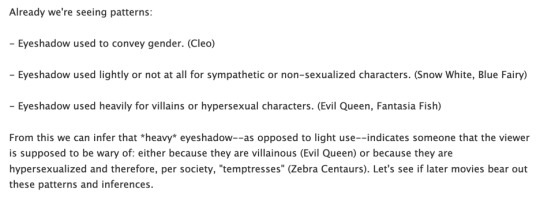
Ok, so here is Ana’s ACTUAL thesis for this post. We already see that his evidence supporting this thesis seems to be weak from the problems with the Snow White/Evil Queen pictures. Let’s see if his later examples demonstrate an actual pattern, and how well he does analyzing any patterns he finds.

So Ana has correctly identified the amount of eyeshadow depicted on the characters this time (yay!) But he’s already building in exceptions to his hypothesis that will need to be accounted for and addressed in more detail; otherwise he’s just handwaving away contradictory data and saying it doesn’t count.

Ok. So Ana is not asserting that the eyeshadow coding he is positing is universal. That’s…good, actually! Any given kind of coding usually won’t be universal, especially in a medium like animation! Acknowledging (and, at the 201 level, discussing potential explanations for) the exceptions is a necessary part of any analysis. Good job Ana, you get a cookie.

…Ana, I’m going to need you to give me that cookie back.
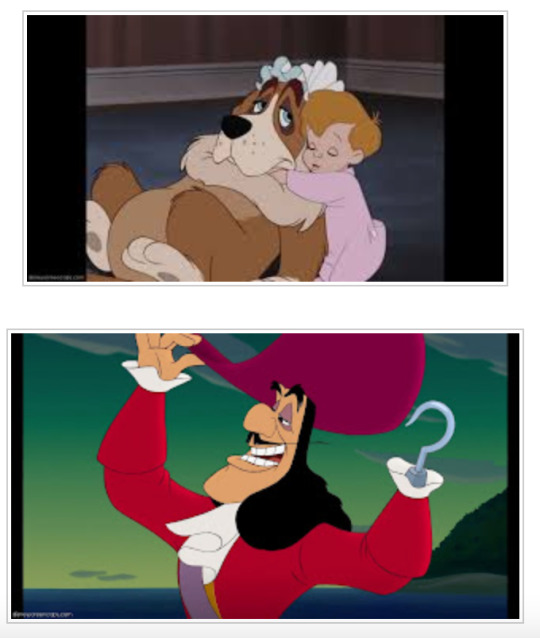
Ana, I know you understand the difference between eyeshadow and eye-bags. I know you know, because you literally just said it. And then you put these two pictures together, right next to each other, and reviewed them with your own eyes. Oh my god.
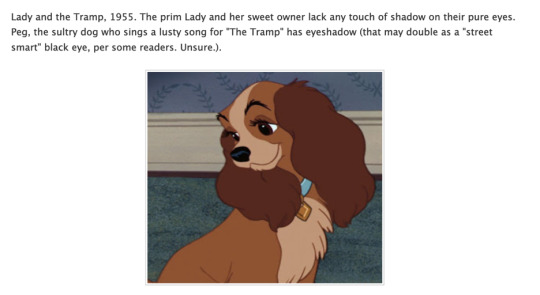
…The Lady’s eyelids are shaded. We can see it in this picture, that you posted, in your post.

What…what do you mean you “don’t know what to make of that”? Do you think that Disney is tricking you by not including the coding you are hypothesizing in every single one of its movies? Do…do you know how coding works? Or animation? I already took away the cookie I gave Ana for realizing that it wouldn’t make sense for this coding to be universal back when he was talking about Alice in Wonderland, so unfortunately I cannot now take it away for forgetting the point he seemed to understand just a few movies ago.
Ana, you owe me a cookie.
…Also, he picked a scene of the squirrels where the girl squirrel has her eyes half-closed, so we can see her eyelid shading. If he had included a picture of Arthur-squirrel with his eyes half-closed, we would be able to see his eyelids shaded in the exact same manner. Oh no! Is the Sword in the Stone secretly about how Arthur is trans???
(ANA THAT IS A JOKE)

So, this looks to me like an animation artifact? And while I didn’t rewatch the movie, after a quick google search I couldn’t find any other frames or images that show Prince John having different-colored eye shading.

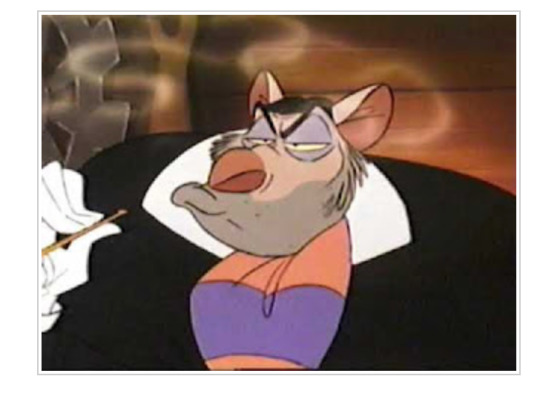
ANA I KNOW YOU KNOW WHAT EYE-BAGS ARE, I AM BEGGING YOU

Gee, Ana, I thought this was a deconstruction - haven’t we previously established that bumbling and ineffective sidekick villains shouldn’t get eyeshadow?
…
...
...
ALSO WHAT DO YOU MEAN YOU CAN’T TELL WHAT’S GOING ON WITH HIS EYES
HAVE YOU EVER WATCHED ANIMATION BEFORE
CAN YOU SEE ANY OF THE REST OF THE FEATURES THEY CHOSE TO INCLUDE IN HIS FACE
ANA WHAT ARE YOU TALKING ABOUT

So. Two things here: one, this is supposed to be a deconstruction. Ana has already demonstrated that femininity actually does not equal eyeshadow in this film. In fact, from the evidence he has presented, there appears to be a better correlation between “eye-shading” and “animated object.” Two, with all of these characters: is eye-shadow supposed to be something we should be wary of, or not? Because with the exception of Lefou, all of the examples he's shown in this movie are of sympathetic characters.

Oh, cool, Ana admits that sometimes eyelids are just shaded slightly differently in animation because that’s a stylistic thing about animation, now that it would hurt the point he is trying to make if he applied the same standard he was applying previously. Also,
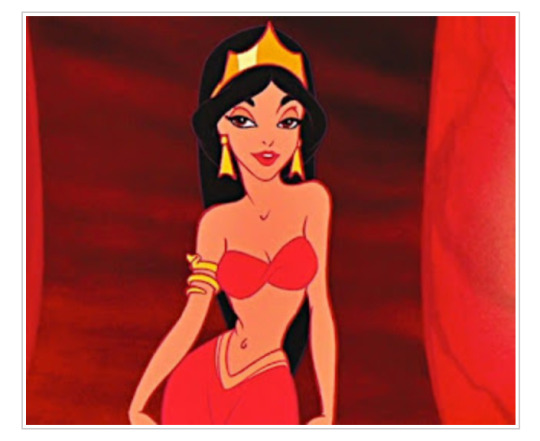
This is the picture Ana used to evidence his contention that Jasmine has no eyeshadow in her red outfit. It's a frame in which it looks an awful lot like she is wearing red eye shadow. Like, looking at some other stills from this scene, I don’t think she is supposed to be wearing red eye shadow? I think it’s just the lighting of this particular scene combined with the red outlines? But this was a terrible piece of evidence to use to make that argument, almost like Ana is grabbing screenshots to support the conclusions he’s already come to, without really looking at them.

Ana. Ana. I am going to have to breeze right past calling Frollo “queer-coded” because that’s not what this post is about.
“Frollo has eyes that just…are naturally shaded, even in the bright of day.”
Ana.
ANA.
WHAT ARE YOU TALKING ABOUT
THIS IS SUPPOSED TO BE A POST ABOUT VILLAIN EYESHADOW
YOU ARE OSTENSIBLY WRITING ABOUT HOW ANIMATION USES VISUAL CODING
WHY ARE YOU CONFUSED ABOUT WHY THE EVIL OLD MANIPULATIVE VILLAIN IS BEING PORTRAYED WITH DEEP-SET AND SHADOWED EYES
HAVE YOU EVER WATCHED A MOVIE BEFORE


EYESHADOW???
EYESHADOW?!?
EYESHADOW?!?!?!?!
HAVE YOU EVER SEEN A HUMAN FACE BEFORE

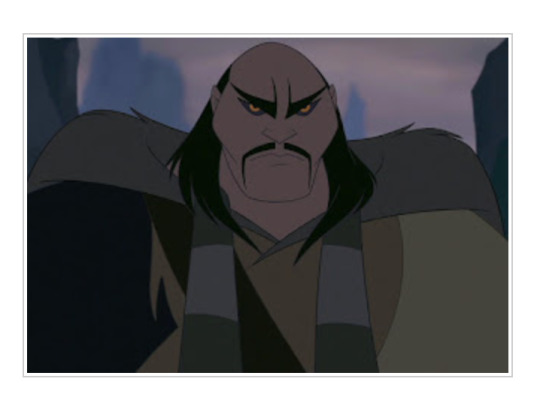
Ana. Ana please I beg you. These men are not wearing eyeshadow. Their eyes are deep-set into their skulls, to make them look skeletal (not feminine!) and villainous. Ana I have to believe that you know this.
These two examples have exhausted me so much I’m skipping the rest because nothing can live up to these heights (down to these depths?).

This is a ok point. It is both accurate and and there is sufficient evidence in this post to back it up. It is also completely banal.

This may or may not be true…but no consistent pattern is evidenced by this post. By my count, Ana talks about 34 movies. She provides evidence that actually supports this claim (that eyeshadow is present or darker for morally bad characters and lighter or absent for morally good characters) for…eight of those movies (Sleeping Beauty, 101 Dalmatians, Rescuers Down Under, Oliver & Company, The Little Mermaid, the Aladdin sequel show, Simba’s Pride, and The Emperor’s New Groove.)* I counted at least seven movies where the only characters presented wearing eyeshadow, sometimes heavy eyeshadow, are morally good or neutral characters.
*I’m not including any movies where there are multiple villainous characters who should have darker/present eyeshadow if Ana’s pattern holds, but only one does (Cinderella and Pocahontas).
Ana is presenting here something that sounds reasonable, sounds like it would be right, but he has entirely failed to evidence it. And as we have seen, he frequently misrepresents what the movies actually depict in order to support this theory. He is either doing this deliberately, or is completely illiterate to visual language.

You can just copy and paste my previous paragraph is response to this point.

Ana includes that last paragraph as a “get out of jail free” card. This is the paragraph he can swing at a detractor like me who howls at his inclusion of Hades and Shen Yu and say, “HA! You’re the one who doesn’t have reading comprehension! I was explicitly talking about how some of these villainous characters have naturally shadowed eyes!”
But the preceding paragraph puts the lie to this paper-thin excuse. He is talking about an “eyeshadow trope” that is used to convey a sense of femininity. He is not making an incredibly banal point about western media using shadows to imply villainy.
While this was fun to laugh at, I hope this silly post also shows why it was bad that Ana was such a prominent voice in progressive media criticism circles. Ana applies the same level of criticism to everything he reads and watches (including real life). It’s not just that he is really really bad at media analysis. It’s that the points he makes are not necessarily wrong, but he consistently fails to evidence his claims. He mixes obvious, evident truths with claims that *sound right* - and are potentially even interesting and worth discussing - but need actual evidence to back them up. It’s that he misrepresents the texts he is examining in order to support his claims, so that his readers cannot trust that they are being given an accurate version of the media he is criticizing. Readers who believe him without double checking are likely to be mislead into believing claims that sound reasonable on the surface but are in fact inaccurate. Readers who follow his lead will become less critical media consumers.
Good riddance. I hope he lives a very long happy life, very far away from any public media criticism circles or moderation duties.
3 notes
·
View notes
Text
Q&A: Sounds Rational
I’m writing a fanfic of a movie and there’s a character who doesn’t like to kill or maim enemies, just disable them with as little bloodshed as possible. He’s a expert swordsman but often switches out his sword for other items like a tree branch, or the handle of a broomstick. But doesn’t that mean his technique also has to be changed to staff weapon techniques? Or?? I can’t tell anything working from a visual medium, which main point is to see some great action.
So, there’s a couple things here.
While it will depend on where someone trained, it’s not uncommon for someone to train with non-edged weapons before moving up to training with blades. This may be simple “practice,” knives and swords, or it could be staves, clubs, or other blunt weapons. Like I said, it depends on their training, but they’re probably proficient in weapons other than just their sword.
There is an entire joke, “while you were behaving like a rational human being, I was studying the blade,” but that doesn’t really reflect how actual combatants train. Even if you only carried a single weapon, you’d still have (somewhat) diverse training on different weapons. (Also, you’d never want to be in a situation where you only carried a single weapon into combat, but that’s a different discussion.)
As for not wanting to kill and dismember people, unless absolutely necessary, that’s entirely reasonable. The problem is, just because you switched to a tree branch doesn’t automatically mean you wouldn’t be killing and maiming. While it’s easier to lop a limb off with a blade, you can still mangle someone’s limbs with a blunt object. It’s “safer,” but no, “safe.”
If the character is wanting to limit the harm they inflict, that’s going to manifest more as a desire to avoid violence where’s it’s not absolutely necessary, rather than just, “okay, I’ll crush their skulls with a broken chair, because that’s more humane than killing them quickly.”
There is a difference between the kinds of scenes that work in visual media and in written prose. Generally speaking, drawn out fight scenes play better in visual media because it is about the spectacle. You don’t get that in prose, so fight scenes that get to the point and move on, play better there.
I’ve said this before, but you really want to structure the story you’re telling around the medium you’re working with. The extreme ends of the spectrum are video games and prose. In most games, violence is engaging. You’re interacting with the systems, so the content can be combat. It’s actually more important than the story being presented in some games. This can result in a situation where you’ll have 15 or 20 combat encounters ahead of each narrative scene. Trying to do that in any other medium would be insane (and wouldn’t work.)
The direct opposite is prose, where violence can easily become dull, especially if it’s overused. Depending on the story, you’d want to ration out that violence for maximum effect. Possibly going an entire novel with five or fewer fights.
Somewhat obviously, the above number will depend heavily on the genre and kind of story you’re telling. For example: if your characters are in a war you’re probably going to see battles.
If the goal is to numb the reader to violence, then having more combat is probably the correct choice. Again, if you have a character who feel’s worn down, feels violence is senseless, and you want to get that across to the reader, then more violence is appropriate.
In this specific example, it sounds like you’ve got a character who trying to distance themselves from violence. There’s nothing wrong with this, but it is important to get in your character’s head. If their goal is to avoid violence, being forced into combat is a fail-state. They tried to talk their way out or avoid this situation entirely, but they failed, and now someone’s going to die.
There’s a lot of flexibility in this thought process, but if someone is forcing your character into violence, going easy on them is probably not a good decision. If they’re willing to force your character into violence, this is probably something they’d do to others.
Now, obviously, if you’ve already got a character in mind, that’s going to affect the way the deal with problems. This is one of the weaknesses with writing fan fiction: If you’re writing your own characters, you’re the best arbiter of what they would or would not do. Others can question whether what you did is consistent with previous statements but, ultimately this is your character. With fanfiction, you need to measure how a character behaves against their canon incarnation. You have much less freedom with the material as a whole, because you didn’t create it. This can also be a specific problem when you’re building off material from a different medium. If the character has a history of prolonged tree branch duels, you’re going to struggle to incorporate that into your work, because those fights don’t play as well in prose.
-Starke
This blog is supported through Patreon. If you enjoy our content, please consider becoming a Patron. Every contribution helps keep us online, and writing. If you already are a Patron, thank you.
Q&A: Sounds Rational was originally published on How to Fight Write.
105 notes
·
View notes